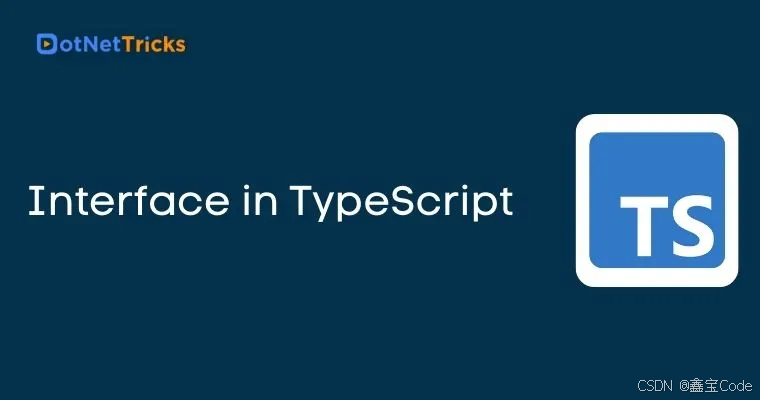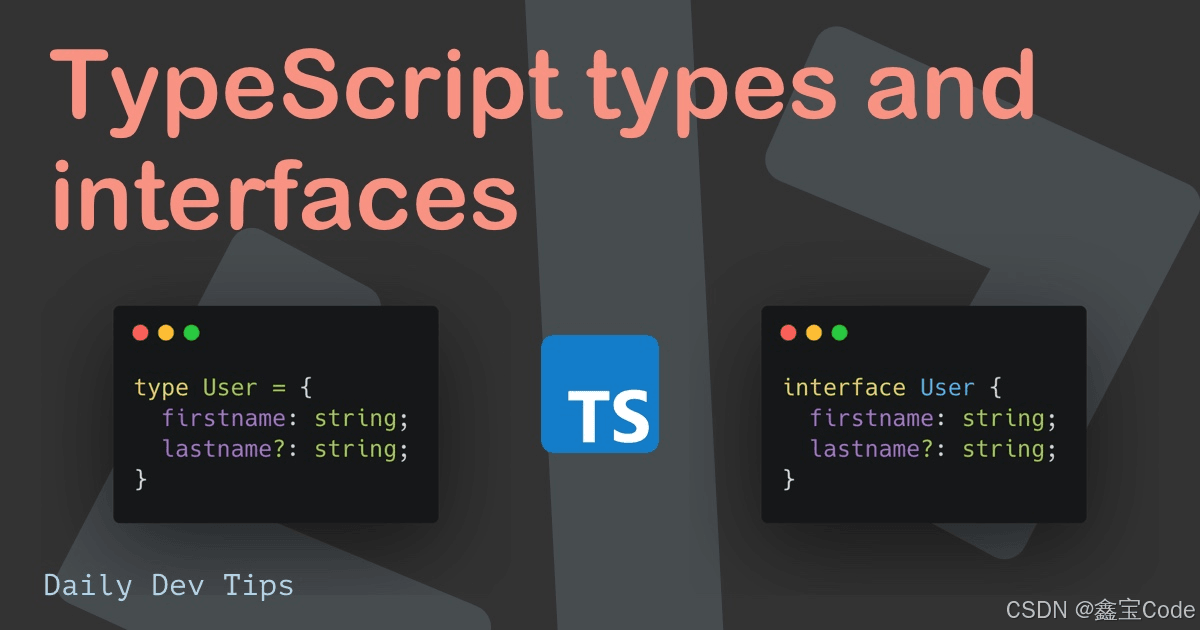typescript中的接口(interface):对象类型的强大工具
引言
在typescript中,接口(interface)是一种强大的工具,用于定义对象的结构和类型。它不仅能够帮助我们更好地组织和描述代码,还能提供更强的类型检查,从而提高代码的可靠性和可维护性。本文将深入探讨typescript中接口的概念、语法和应用,帮助您更好地理解和使用这一重要特性。

1. 接口的基本概念
1.1 什么是接口?
在typescript中,接口是一种用于定义对象类型的方式。它描述了一个对象应该具有的属性和方法,但不包含实现细节。接口可以看作是一种"契约",定义了对象应该遵守的规则。
1.2 为什么使用接口?
使用接口有以下几个主要优点:
- 提供更强的类型检查
- 提高代码的可读性和可维护性
- 支持代码重用和模块化
- 便于团队协作和api设计
2. 接口的基本语法
2.1 定义接口
使用interface关键字来定义接口:
interface person {
name: string;
age: number;
}2.2 使用接口
定义好接口后,我们可以使用它来声明变量或函数参数:
function greet(person: person) {
console.log(`hello, ${person.name}!`);
}
const john: person = { name: "john", age: 30 };
greet(john); // 输出: hello, john!3. 接口的高级特性
3.1 可选属性
使用?标记可选属性:
interface car {
brand: string;
model: string;
year?: number;
}
const mycar: car = { brand: "toyota", model: "corolla" };3.2 只读属性
使用readonly关键字标记只读属性:
interface point {
readonly x: number;
readonly y: number;
}
const point: point = { x: 10, y: 20 };
// point.x = 5; // 错误:无法分配到 "x" ,因为它是只读属性3.3 函数类型
接口也可以描述函数类型:
interface mathfunc {
(x: number, y: number): number;
}
const add: mathfunc = (a, b) => a + b;3.4 可索引类型
接口可以描述可以通过索引访问的类型:
interface stringarray {
[index: number]: string;
}
const myarray: stringarray = ["apple", "banana", "cherry"];
console.log(myarray[1]); // 输出: banana4. 接口的继承和实现
4.1 接口继承
接口可以相互继承,从而创建更复杂的类型:
interface shape {
color: string;
}
interface square extends shape {
sidelength: number;
}
const square: square = { color: "blue", sidelength: 10 };4.2 类实现接口
类可以实现一个或多个接口:
interface printable {
print(): void;
}
class book implements printable {
title: string;
constructor(title: string) {
this.title = title;
}
print() {
console.log(`printing: ${this.title}`);
}
}5. 接口的高级用法
5.1 混合类型
接口可以描述复杂的混合类型:
interface counter {
(start: number): string;
interval: number;
reset(): void;
}
function getcounter(): counter {
let counter = function (start: number) {} as counter;
counter.interval = 123;
counter.reset = function () {};
return counter;
}5.2 接口合并
当定义多个同名接口时,它们会自动合并:
interface box {
height: number;
width: number;
}
interface box {
scale: number;
}
const box: box = { height: 5, width: 6, scale: 10 };6. 接口vs类型别名
typescript中的类型别名(type alias)也可以用来定义对象类型,那么它与接口有什么区别呢?

6.1 相似之处
- 都可以描述对象或函数
- 都允许扩展(extends)
6.2 不同之处
- 语法:接口使用
interface关键字,类型别名使用type关键字 - 合并:同名接口会自动合并,而类型别名不会
- 计算属性:类型别名可以使用计算属性,接口不行
- 实现:类可以直接实现接口,但不能直接实现类型别名(除非类型别名指向一个接口)
6.3 选择建议
- 在大多数情况下,优先使用接口
- 当需要使用联合类型或元组类型时,使用类型别名
- 当需要利用接口自动合并的特性时,使用接口
7. 最佳实践和注意事项
7.1 命名规范
- 使用pascalcase命名接口
- 避免使用"i"前缀(如ishape),这在typescript中被认为是不必要的
7.2 保持接口简单
- 每个接口应该只描述一个概念
- 避免创建过于复杂的接口,可以通过接口继承来组合多个简单接口
7.3 利用接口提高代码质量
- 使用接口来定义函数参数和返回值类型
- 在大型项目中,为公共api定义接口
7.4 接口vs抽象类
- 当只需要定义类型而不需要提供实现时,使用接口
- 当需要提供一些基本实现时,使用抽象类
结论
typescript中的接口是一个强大而灵活的特性,它为我们提供了一种清晰、简洁的方式来定义对象的结构和类型。通过使用接口,我们可以编写更加健壮、可维护的代码,并且更容易进行团队协作。
掌握接口的使用不仅可以帮助您更好地利用typescript的类型系统,还能提高您的整体编程水平。随着您在实际项目中不断实践和探索,您会发现接口在各种场景下的强大应用。
希望这篇文章能够帮助您更好地理解和使用typescript中的接口。继续探索和实践,相信您会在typescript的世界中发现更多精彩!
到此这篇关于typescript中的接口(interface):对象类型的强大工具的文章就介绍到这了,更多相关typescript 接口interface内容请搜索代码网以前的文章或继续浏览下面的相关文章希望大家以后多多支持代码网!






发表评论